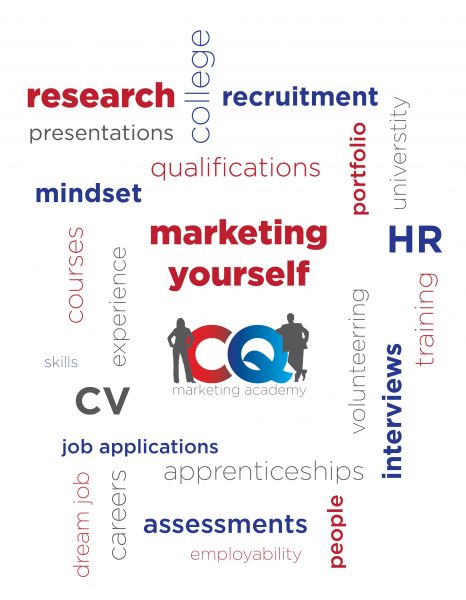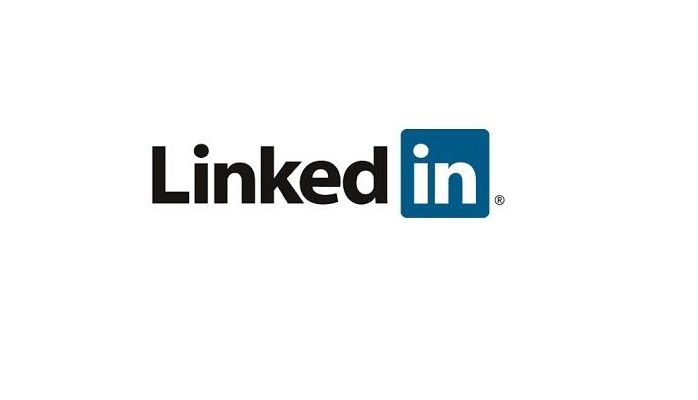Category: Blog
The CQ marketing cycle – Step 1 – Understand your market
Written on . Posted in Blog.
Business continuity planning must be the topic of the day!
Written on . Posted in Blog.
As a marketer we are continually looking at our (and those of our clients) target market to adapt the products and services we offer. At a time when the world we operate in is constantly changing communication will be key to keeping employees, customers, potential customers and stakeholders informed.
With many business owners looking at how to keep their business running with potentially staff out of the business, travel restrictions, tradeshows and many networking events being postponed businesses will need to increasingly look at digital marketing as a means of keeping communication channels open.
 Some of the things that businesses are having to consider at the moment, include:
Some of the things that businesses are having to consider at the moment, include:
- Establishing remote access to files and systems
- Ensuring phone lines can be answered remotely or diverted
- Keeping communication lines between internal teams
- Communicating changes in how they will be delivering their product or service to their customers
- Managing crisis communications with the media
- Moving to online product ordering or service delivery
- Access to supply chains – movement of goods and availability of service delivery providers
We are already talking to our clients about plans to keep communicating with their internal teams and their external markets including key messages, social media activity, email campaigns, moving their IT to the cloud with remote access, diverting telephone lines, developing online shops or service provision.
If you need to discuss your marketing strategy, planning, communications and digital solutions give us a call, we would be happy to help.
Marketing yourself
Written on . Posted in Blog.
In an increasingly competitive job market how do you make yourself stand out to your future employer?
There are several marketing techniques that you can apply just as equally to marketing a company or a product that can be used to promote you and your skills.
A few thoughts on researching your chosen career:
- Read books on theory and practice to top up your knowledge or research a change of role
- Look at relevant professional bodies, membership of a professional body shows commitment to your career and continuous professional development, they also hold a lot of information to help you in your career and hold regular networking events
- Find out what are the recognised qualifications for that job role
- Get a subscription to online and print trade magazines so you are up to date with what is happening
- Book to go to networking events that the types of businesses you want to work for will be attending
- Research job vacancies, look at job specs what are employers looking for in skills and qualifications, identify the gaps in your knowledge and work out how you can fill them
- Think about volunteering, committees for relevant charities/organisations to gain experience
 Showcasing your talent, making yourself stand out:
Showcasing your talent, making yourself stand out:
- CV, bring your relevant experience and qualifications to the front
- CV, format of the document, make it easy to read but maybe style the document to suit your ideal job so event programme for event management, set of accounts for accountant, marketing brochure, legal document, engineering drawing etc
- Testimonials and references from former employers and colleagues to highlight the skills needed in that job role, get a to whom it may concern letter so you have it to show your future employer or client
- Develop a portfolio of examples of work that you have done, to write case studies remember what was the problem, how did you solve it, what was the outcome, quote from the person you did the work for, pictures to break up the text
- Use of video, particularly for more creative careers or where people skills and personality is important make a little video to use on your LinkedIn profile or send a dvd/usb stick to your prospective employer with your cv and portfolio
For further information or advice please contact [email protected] or 01709 430491
Winning customer loyalty for long term benefit
Written on . Posted in Blog.
In an increased push to see Return on Investment for your marketing activity many companies focus their activity purely on their customer markets. However by creating advocates for your product or service these can be an effective sales force and brand reinforcement for both existing and potential customers.
Relationship marketing focuses on customer loyalty and long-term customer engagement rather than shorter term goals like customer acquisition and individual sales. By adopting a longer term relationship marketing approach rather than a one-off transactional marketing approach you build a solid customer base but you also add greater value building trust and understanding of the way each others businesses and industry sectors work. The same approach can be adopted with the other key influences on the business and its customer markets.
We commonly find that both in a local business community or a specific industry we all comment that ‘everyone knows everyone else’ so just imagine the power of that sense of community if a majority hold a high opinion of your product or service. By marketing through your employees you engage your workforce to be understand the product or service and with open communication they buy in to where the business is going and it’s approach and values with the additional benefit that they become your best advocates.
Suppliers are also key to a business achieving their goals without them you may not be able to deliver that order for that customer that is needed in a hurry, but they are also dealing with others who may need your service. The same applies for other markets whether that is other suppliers targeting the same companies you do, industry bodies, universities, recruitment etc. By building that network and communicating regularly where your business is, what it is capable of and what your goals and ideal business would be, you can all help each other.
When planning your marketing campaigns don’t forget to incorporate your internal marketing, make sure your members of staff understand the business and marketing goals, campaigns and results. There is nothing worse than that customer phone call referring to an e-shot sent by the marketing department that the sales team or person answering the phone doesn’t know about!
This can be shared industry knowledge, sales referrals, potential employees, any number of benefits so next time you plan your marketing campaigns don’t forget to include internal, supplier, recruitment, influence and referral markets.
For further information or advice please contact [email protected] or 01709 430491
How to best communicate through LinkedIn – using status updates and posts
Written on . Posted in Blog.
LinkedIn has had another update and rolled out the use of posts to all users so do you know when to use a status update, what is the difference from a post? It can be confusing to many users.
LinkedIn was started for business networking but I’ve seen an increasing number of people posting and commenting complaining about people sharing personal updates saying this should be for Facebook or Twitter. Some examples of this have been word searches/puzzles, motivational images, birth of a child etc. I would say think about your audience and what you are using each social medium for, if you are trying to promote your business and expertise some of this could be distracting from your main message of what you do and how you can solve your clients problems.
So what different ways can you communicate your message through LinkedIn?
LinkedIn has expanded the use of the posts facility tied into LinkedIn Pulse but not everyone seems to be aware of the difference between content on here and your own or company profile status updates.
Status updates, on your personal profile or your company profile could include things like:
- Your company news stories or recent press coverage
- New appointments
- New contract wins
- New product/service offer
- Technical updates/changes in your industry
- Apprentices
- Awards wins
- Event announcement or images post event
- New accreditation gained eg ISO, IIP etc
- Internal company news, staff long service awards, promotions
- Details of your product or services or latest offer
- Details of where your target market can meet you at an exhibition or trade show
- Examples of your work/details of a completed project
- Job vacancy details for your company
- Share a relevant/interesting news story for your industry sector or target market
Posts are more like a blog rather than a news article. They are best around 500 to a maximum of 1,000 words. Include a relevant image where possible to illustrate your point. A more informal style can be adopted with a blog than a news article. It can be a discussion round the topic, it could be in a style of ‘Top 10 tips’ or an expert opinion piece. It should be informative rather than a sales pitch about your latest offer or product launch. For example, it could be discussion on a latest change in legislation or a trend in how business is done and how it will affect your industry or a thought piece on the best way to approach a certain issue based on your experience.
So why is a news article different to a blog? It should be news and so always answer the ‘So what?’ factor, why should it grab my attention, what’s changed or new. It should cover the Who? What? Why? Where? When? How? It should be in the third person apart from, where possible, a quote from the subject of the story which should add a personal take (even if it tows the company line).
Another thing I’ve noticed a lot of recently if you share a link someone else has posted on LinkedIn remember to add something in the text box to highlight what your link is about or why your readers should be interested or delete the “Share an update or mention someone using @” as this will appear with your post.
How to focus and target your marketing to get better results
Written on . Posted in Blog.
Segmentation, Targeting and Positioning may sound like marketing jargon but it is about understanding who your customers are, how they make their decisions, who makes the decision to purchase, and how to best answer their needs. This is important to break up your potential customer base which enables you to give focus to your marketing efforts. You can then target particular industry sectors, locations, with messages that are more tailored to their needs and so improve interest and convert them to want to buy your product or service.
Segmentation is about building a profile of who your customers are, where they are geographically, who are the decision makers, how often do they purchase. Identifying the benefits to your customers of your products or service as oppose to selling them the latest gadget, think about what problem are you solving?
Targeting, having identified who your customers are, you need to look at the attractiveness of each segment to start and establish priorities. Some of the factors to consider include market size, is it a growing or declining market, profitability, your market share, your competitors activity and strength; your route to market ie through a distributor or agent, selling direct, your existing order base and capacity. If you are already busy can you get resource onboard to cope with increased orders or do you need to train people up in advance.
Positioning, having looked outwards from your company at the marketplace you operate in and your competitors you now need to look at your product or service offering. Keep in mind what does your competitor offer and what problem for your customer is it that you are solving. If you have established different segments of your overall customer base they may well have different needs so may need a different marketing message or service offer.
Marketing Planning, must always be in line with the overall business objectives taking into account for example goals for growth, budget for marketing activity, production capabilities. Developing your marketing plan with campaign themes across a range of communication channels, remember to stay realistic when looking at frequency of communication think also about how much you have to say and whether you have the resource to staff it either inside the company or outside consultants for specialist elements. For example, you are better starting with a quarterly newsletter and building up to monthly if you have the content then launching a monthly newsletter and not delivering as what does this then say about your service. You will also need to ensure you build and most importantly update a database of your potential customers is this a separate system to your accounts, production systems, how do you ensure all are updated, things to consider. After your campaigns make sure you report and evaluate success, adjusting for future campaigns.
How to master the tricks of the trade show
Written on . Posted in Blog.
Trade shows or exhibitions are popular sales opportunities for technical businesses, and provide a great example of how effective marketing can complement your sales effort and help you to win more business. They also provide a great example of how ‘sales’ without ‘marketing’ can be a waste of your precious money.
How many companies still attend exhibitions, at great expense, without telling their prospective customers in advance that they’re going, and why they should visit the stand? The answer: lots of them.
Modern marketing technologies including e-mail, News and Blog feeds (via your website) and social media are low-cost and highly effective methods of communication, enabling you to ‘warm up’ your contacts before the exhibition – to tell them that you’re going, where they can find you (hall and stand number), why they should visit you (your unique service offer), and how they can pre-arrange meetings with you. By doing this you’ll be on the front foot when you get there – with potential customers warmed up and lined up for sales meetings.
Once the exhibition is underway, your competitors are likely to be doing everything they can to attract your prospective customers to them, with product/service launches, drinks receptions as well as sustained communications announcing their on-stand activities and service benefits.
You need to keep communicating with your prospective customers throughout the exhibition, via social media, e-mail or text, to keep you at the forefront of their minds and draw them back to you.
When your prospective customers get home, they’ll no doubt find a ‘to do’ list as long as their arm, a pile of paperwork and the usual problems to sort out. There’s a real possibility that they’ll forget about that promising discussion you had at the exhibition, and that your sales effort will lose its momentum. It’s also likely that, while they really like your services, they’re just not ready to buy yet.
That’s where ‘lead nurturing’ comes in. First of all you need to get those prospective customers onto your marketing database, and connect with them via social media. Then you need to ‘keep the conversation going’ by providing them with targeted information that ‘solves their problems’ – about how you can increase their productivity, reduce their down time, maximise their profits. This will keep you and your services at the forefront of their minds and gradually build their trust in you, making them more likely to come to you when they’re ready to buy.
As we highlighted last month your marketing should be little and often, don’t stop just because your back from the exhibition.
Make sure you don’t turn off the dripping tap
Written on . Posted in Blog.
All too often, marketing is that thing companies do when they suddenly realise they haven’t got enough work in to keep everyone busy.
Even if you’re a manufacturer and production is in full flow, or you operate in a service sector and your staff are working flat out with clients, you should still be putting time and effort into your marketing strategy.
You should constantly be marketing your products or services, and raising the profile of your business in your local community so that in the future, you will have no problems in attracting quality employees who want to work for you.
Your marketing needs to be like an ever-dripping tap. It needs to be little and often. So for example, instead of trying to write an annual newsletter, you should organise mini campaigns, on a monthly or quarterly basis – and supplement them with regular social media posts – for instance, weekly bulletins on LinkedIn, and daily comments on Twitter ( where the feed moves so much faster).
Look at planning monthly or quarterly themes for your activity across all media, e-newsletters, PR and social media. Host a seminar or an open day, exhibit at a trade show. But remember, the key is to have clear themes running across all your activity so that you are presenting a consistent message to your target market.
Another valuable tip is don’t be afraid to repeat the message, particularly on social media. It is fair to say that not everyone will see your posting the first time. In the case of some social media, the feed of what is coming through moves so fast it is gone in minutes. There is a lot of hype around social media and indeed I work with businesses and directors on their social media profiles, and many businesses are somewhat nervous of it. I strongly advise you not to be put off by the jargon and to remember it is just another communication channel and a great means of reaching your audience, in a more instant and direct way.
The key to successfully marketing your business, skills and services is to keep at it. It isn’t just existing customers and potential customers that see your marketing activity, but also your industry, suppliers, potential employees and the business community as a whole.
You want all of them to have a positive, up to date message about your company, one that accurately portrays what you currently offer.
Marketing is all about timing – of getting the right message in front of that potential customer at the time they decide to do something about the problem you can solve. But if you stop communicating, the customer may go elsewhere – as your competitors’ message may get there when yours didn’t.
- 1
- 2








